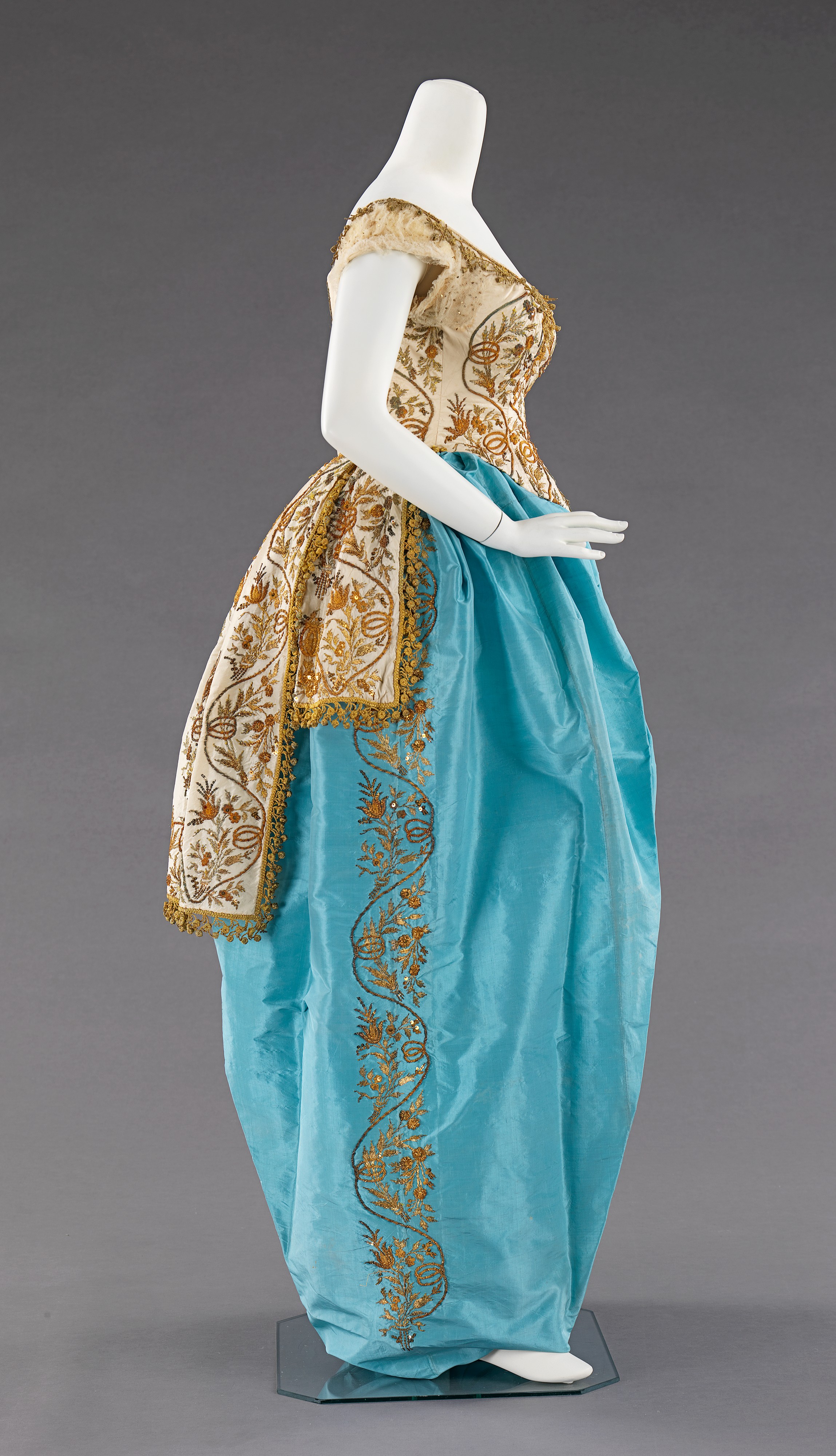Fancy dress costume
Design House House of Worth French
Designer Charles Frederick Worth French, born England
Not on view
This Turkish style costume exhibits the European and American fascination with Turkish dress which stems from the 18th century and endured throughout the 19th and early 20th centuries. This trend culminated in 1911 with Paul Poiret's "harem" pants and Turkish themed fancy dress ball, "1002nd Night." This style of pants also saw widespread use in the early 19th century for water exercises.
This particular pair of Turkish trousers combined with its elaborately embroidered fashionable bodice, is appropriate for a fancy dress ball and indicates the lengths that people would go to for this type of costume event. Owning an expensive Worth fancy dress ball ensemble would have been the epitome of distinction and extravagance.
Charles Frederick Worth was born in England and spent his young adulthood working for textile merchants in London while researching art history at museums. In 1845 he moved to Paris and worked as a salesman and a dressmaker before partnering with Otto Bobergh to open the dressmaking shop, Worth and Bobergh, in 1858. They were soon recognized by royalty and major success followed. In 1870 Worth became the sole proprietor of the business. At his shop, Worth fashioned completed creations which he then showed to clients on live models. Clients could then order their favorites according to their own specifications. This method is the origin of haute couture. Worth designed gowns which were works of art that implemented a perfect play of colors and textures created by meticulously chosen textiles and trims. The sheer volume of the textiles he employed on each dress is testimony to his respect and support of the textile industry. Worth's creative output maintained its standard and popularity throughout his life. The business continued under the direction of his sons, grandsons and great-grandsons through the first half of the twentieth century.
Due to rights restrictions, this image cannot be enlarged, viewed at full screen, or downloaded.
This artwork is meant to be viewed from right to left. Scroll left to view more.




.JPG)

